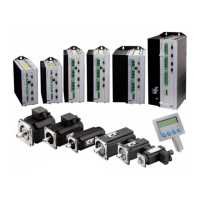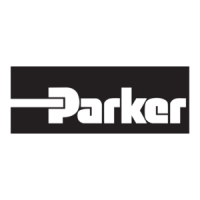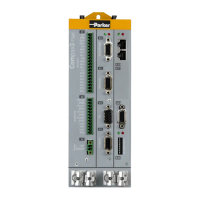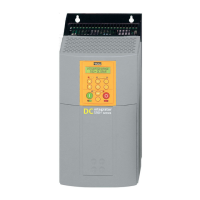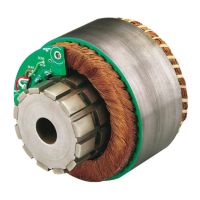Parker EME
Setting up Compax3
192-120113 N08 C3I12T11 - December 2010
the control difference vanishes. In a digital control the static stiffness is above all
limited by the finite resolution of the position signal (the error must be at least one
quantization step, so that it can be detected by the reading system) and by
numerical resolution. Additional effects are for instance mechanical stiffness of the
mechanic components in the control path (e.g. load connection, guiding system) as
well as measurement errors of the measurement system.
Dynamic stiffness
In this chapter you can read about:
Traditional generation of a disturbance torque/force jerk ................................................ 201
Electronic simulation of a disturbance torque jerk with the disturbance current jerk........ 201
Disturbance jerk response ............................................................................................. 202
The dynamic stiffness is described by the ratio between the change in load torque
or in load force and the resulting position deviation (following error):
The higher this ratio (=dynamic stiffness), the higher the necessary change is load
torque in order to generate a defined following error.
The dynamic stiffness can be acquired from the disturbance jerk response.
Traditional generation of a disturbance torque/force jerk
In settled state of the control, the motor force FM corresponds exactly to the load
force FG=m×g.
If the cord is cut through, the load force is eliminated abruptly and the controller
must first of all settle to the new situation.
In order to simulate this load jerk electronically, a disturbance current jerk is fed to
the Compax3 as a variable proportional to the disturbance torque at the velocity
controller output.
Electronic simulation of a disturbance torque jerk with the disturbance
current jerk
Current Controller
Stromregelung
Motor
Speed Controller
Drehzahlregelung
Position Controller
Positionsregler
Xw
X n i
1
K
T
1
1:
Feeding in of a disturbance current jerk, which corresponds to a disturbance torque jerk.
The maximum amplitude an the settling time of the following error decline with
rising dynamic stiffness. The settling behavior of the following error is furthermore a
measure for the attenuation and the bandwidth of the control.

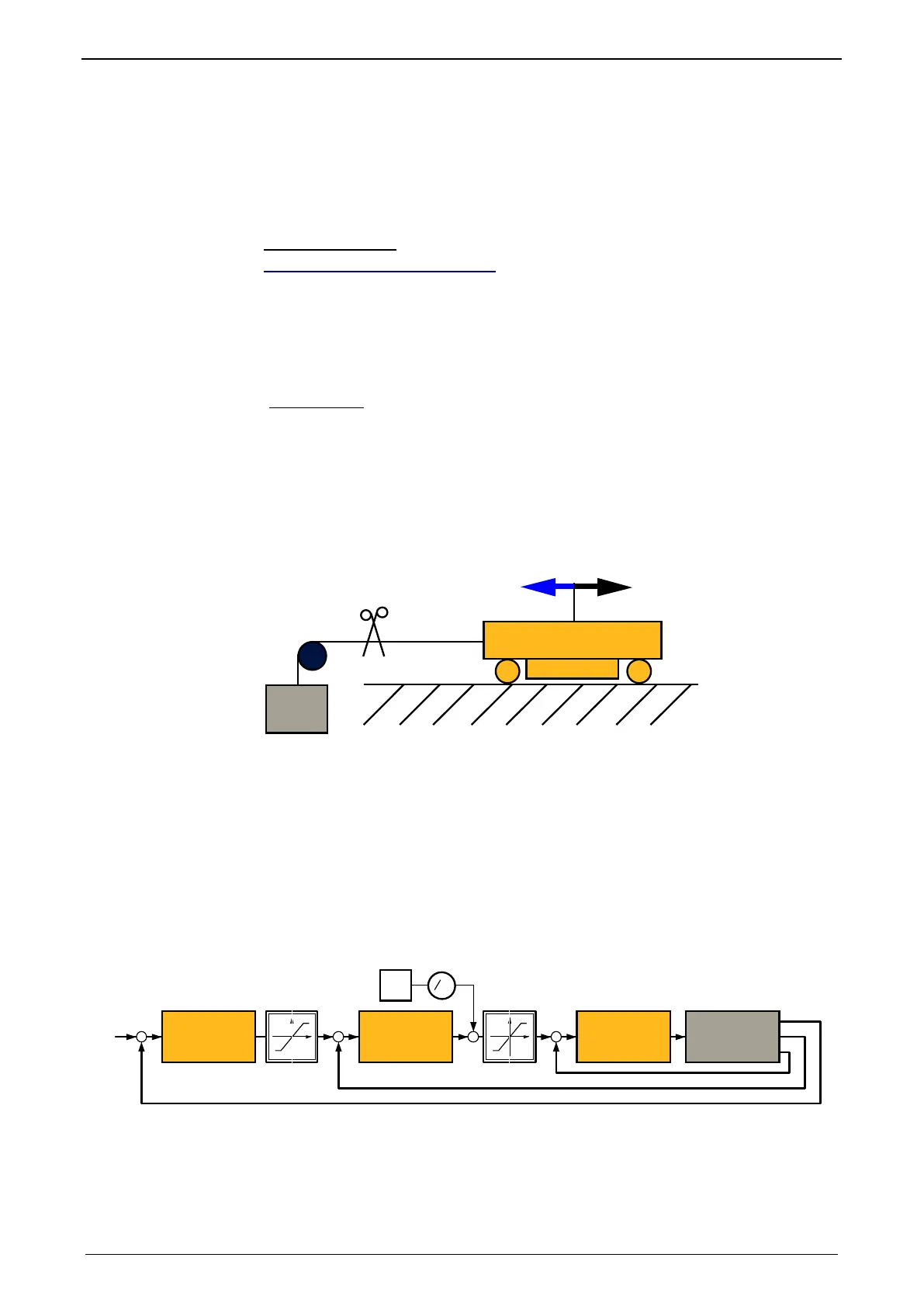